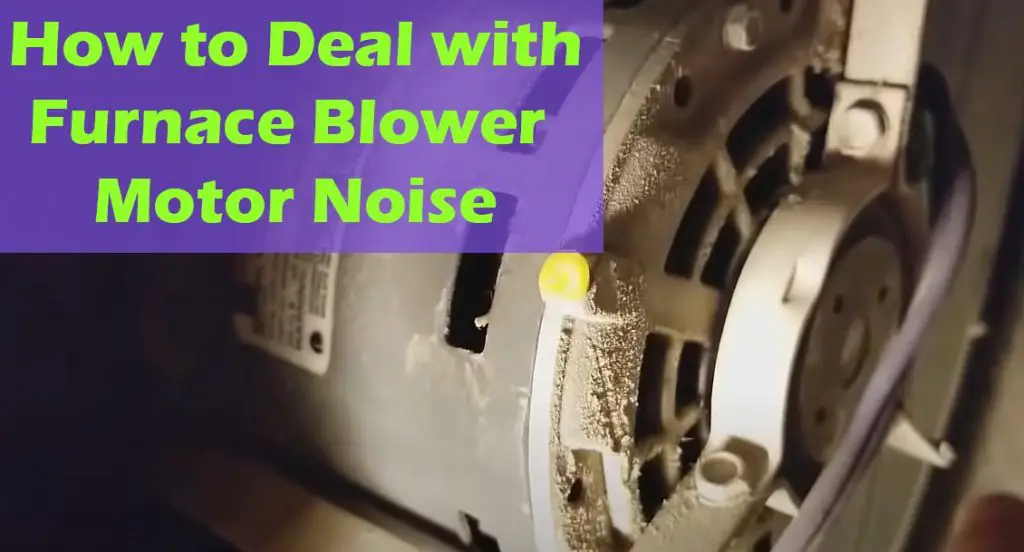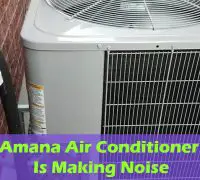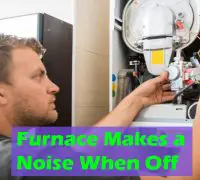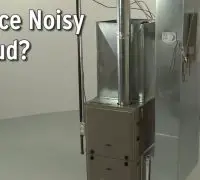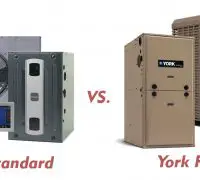The furnace blower motor can produce various noises when it starts. Sometimes, the noises indicate serious problems, whereas sometimes, they mean nothing to worry about. More often than not, a loose belt or screw can make the blower motor loud when starting. At the same time, a severe issue, such as a cracked heat exchanger, can make the blower motor generate sounds.
Whatever the problem, you should turn the furnace down and call a certified HVAC technician to diagnose and fix the issue. Details about the typical noises that the blower motor can produce and the causes and fixes also come below.
Page Table of Contents
Furnace blower motor noise—what are the common causes?
Furnaces are relatively straightforward appliances, and troubleshooting one isn’t as complicated as it used to be. Even if the fixes might not be very complicated, you will most likely need to remove the blower assembly from the furnace, which can be tricky for many homeowners.
Humming or buzzing sound
Buzzing or humming is a familiar sound for the blower motor. It can mean that the blower fan speed requires some adjustment. If this doesn’t work, the blower motor might have severe damage inside.
Squealing or grinding
Blower motors require lubrication to run quietly and smoothly. With new furnaces, the blower motors are constantly lubricated and factory sealed. However, the blower has oil ports with old furnaces and needs lubrication once a year.
The best solution is to check the furnace manual to see if you can lubricate the motor. You can also look for openings or ports that help you add oil or lube. Use a good quality oil and see if the blower motor still squeals or grinds afterward.
The blower motor is dirty
If the blower motor is dirty, it will generate a humming noise. It can happen when you don’t clean or replace the furnace’s air filters regularly. It would help to clean the filters so that dirt and dust don’t get inside the furnace. Remove the service panel of the furnace and find the blower. If it looks filthy, you should perform a deep cleaning.
Bent or misaligned blower wheel of a shaft
A humming noise of the blower motor can also occur when the wheel or shaft is bent or misaligned. You must remove the blower assembly and replace the broken part to fix it.
If the motor fails, it will make a humming noise and replacement is the only solution. A faulty transformer or a defective draft inducer motor can also generate humming noises. If you suspect any of these problems with your furnace, you should contact a certified HVAC technician for troubleshooting and fixes.
A screeching sound
The screeching sound is one that you shouldn’t ignore and several problems are causing the sound:
The belt is loose or damaged
If the blower motor makes a screeching or squealing sound, a defective belt is the most common cause. Belt-driven blower fans are expected for old furnaces, which wear down, crack and stretch after some time. When the belt is loud, slipping, and seems cracked, you should replace it.
There’s a problem with the motor bearings
A problem with the bearings in the inducer motor or the blower will cause a screeching sound. Bearings are essential as they allow various motor components to move without producing friction in between. As a result, the fan motor will perform quietly and smoothly.
Dirt, overheating, and lack of lubrication (familiar with aging units) will make the bearings defective. When you don’t take care of the bearings on time and let them wear out completely, the motor will burn out or seize. You must call the pros to replace the bearings before the motor breaks down.
Many professionals agree that replacing the entire motor assembly is wiser than replacing the bearings. The cost will be close to the same and you won’t worry about the blower for many years. It would help if you took it to an HVAC professional for further recommendations.
Scraping and grinding noises
A loose blower wheel or a broken blower motor mount or bracket will typically generate scraping and grinding noises. The blower wheel is connected to the blower motor by a screw. At times, this screw can get loose and make the wheel rub against the blower housing. Tightening or replacing the screw is the best solution.
When the blower motor mount is broken, the blower wheel will rub against the blower’s housing. The solution is to replace the blower motor mount.
Thumping or clanking noises
Such sounds occur because of a loose or broken part inside the blower assembly. You should turn it off when you hear clanking or thumping from the furnace. Professional inspection and repairs might be necessary. When a part becomes loose, it can damage other components of the blower motor.
Popping or banging noises
When you hear popping or banging noises coming from the blower motor when you turn it on, there can be several causes:
Delayed ignition
If you hear banging or popping noises every time the blower turns on, something could delay the ignition of the gas. When gas doesn’t ignite immediately, it will build up in the combustion chamber. The banging comes from the mini-explosions that occur when the gas eventually ignites. Various problems will delay ignition: moisture, rust, dirty or misaligned burners, too much air mixing with the gas, a dirty pilot light (old furnaces have pilot lights), and defective hot surface ignitors (new furnaces come with hot surface ignitors).
Delayed ignition is not a problem that you can postpone fixing. It can make the heat exchanger crack and even generate a fire in the furnace space. Please shut down the furnace when you notice delayed ignition and contact the pros for servicing.
Expanding ductwork
When the blower turns on, it pushes the heated air through the metal ducts. In the winter, the thin sheet metal ducts can get cold and expand once heated, generating banging and popping sounds. It’s not a severe issue, but the noise can get annoying.
One solution is to insulate the ductwork to eliminate the risk of popping noises. Before insulating the ductwork, you must seal them and plug all the leaks.
High-pitched rattling noise
A high-pitched rattling noise right before or when the blower turns on is a sure sign that the heat exchanger has cracked. A cracked heat exchanger is a severe problem because it can let carbon monoxide leak inside the house. You have to shut the furnace off until a certified HVAC technician comes for inspection and servicing.
Rumbling noise
The burner could be dirty when the furnace produces a low rumbling noise after the blower turns on. Soot collects on the burners due to regular operation; you need to remove it once a year. If the soot builds up, it will stop the airflow necessary for combustion and generate the rumbling noise. Take a look at the burners and clean them if they’re covered in soot. An effortless solution is to call the pros for professional cleaning and annual tune-up.
Cleaning the furnace blowers isn’t straightforward and is better left to the professionals.
A whistling noise
A dirty or clogged air filter will make the blower motor produce a whistling sound when turned on. While the blower turns on, the filter will pull air. However, if the airflow is restricted (for various reasons), the air will move around the filter and cause a whistling sound.
Look at the air filter and change it when it’s dirty. Restricted airflow can also happen in the fresh air intake vents, so don’t forget to check out these vents. Leaves, snow, ice, and even animal nests could block the airflow, causing all sorts of issues.
